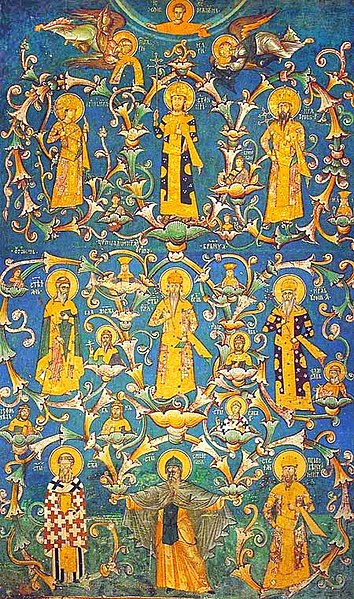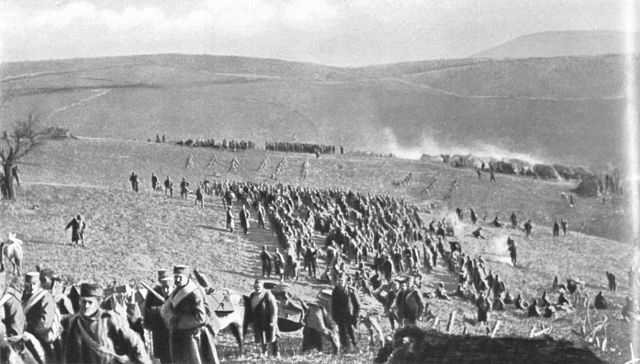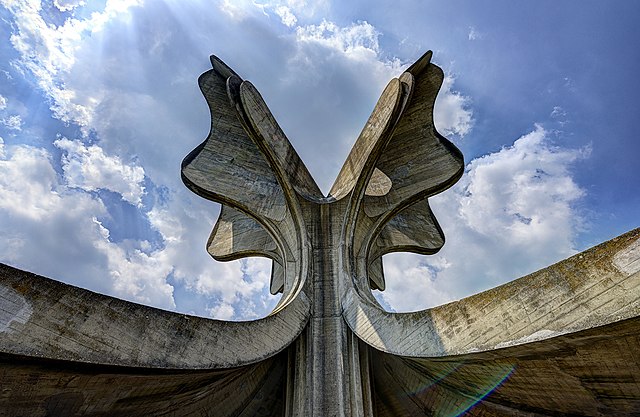Saint Sava, known as the Enlightener, was a Serbian prince and Orthodox monk, the first Archbishop of the autocephalous Serbian Church, the founder of Serbian law, and a diplomat. Sava, born as Rastko Nemanjić, was the youngest son of Serbian Grand Prince Stefan Nemanja, and ruled the appanage of Zachlumia briefly in 1190–92. He then left for Mount Athos, where he became a monk with the name Sava (Sabbas). At Athos he established the monastery of Hilandar, which became one of the most important cultural and religious centres of the Serbian people. In 1219 the Patriarchate exiled in Nicea recognized him as the first Serbian Archbishop, and in the same year he authored the oldest known constitution of Serbia, the Zakonopravilo nomocanon, thus securing full religious and political independence. Sava is regarded as the founder of Serbian medieval literature.
Fresco detail of Saint Sava in Serbian Orthodox Patriarchate of Peć monastery, Serbia
Sava blessing Serb youth, Uroš Predić (1921).
Crowning of Stefan, by Anastas Jovanović.
Fresco in Mileševa.
The Serbs are a South Slavic ethnic group native to Southeastern Europe who share a common Serbian ancestry, culture, history, and language. They primarily live in Serbia, Kosovo, Bosnia and Herzegovina, Croatia, Montenegro as well as in North Macedonia, Slovenia, Germany and Austria. They also constitute a significant diaspora with several communities across Europe, the Americas and Oceania.
Nemanjić dynasty members, the most important dynasty of Serbia in the Middle Ages
Migration of the Serbs (1896), a painting by Paja Jovanović, depicting the Great Serb Migrations led by Patriarch Arsenije III Crnojević, 17th century.
Battle of Cer marked the first Allied victory over the Central Powers in the First World War.
Stone Flower, a monument dedicated to the victims of Jasenovac death camp, which was part of the Genocide of Serbs committed by Ustaše








